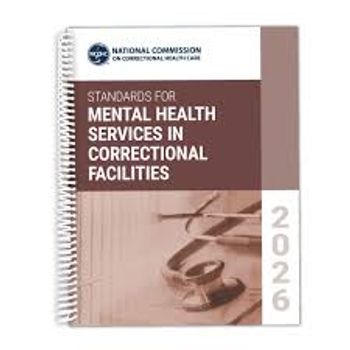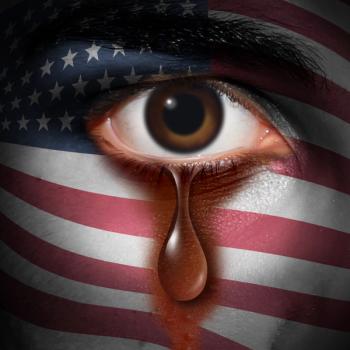
Is This the Worst Time Ever to Have a Severe Mental Illness?
The institutions of yesterday were overcrowded, noisy, and often had a distinctive odor. Patients were neglected and mistreated. Yet those problems have been replaced with a different set. More in this commentary.
My personal response to this depressing question would have to be an ashamed “Yes” for the US; a relieved “No” for most of the rest of the developed world.
Admittedly, though, I am not the best person to provide a long-view answer. We will soon be turning to Professor Edward Shorter, an eminent historian of psychiatry, to compare our current mistreatment of the severely ill with the practices of past epochs.
But I can speak from painful experience about the slippery downward slope of the past 50 years. When I first began work as a medical student on a psychiatric ward, we were very, very optimistic that three new advances would dramatically improve the lives of our patients: 1) the availability of effective medication; 2) the availability of powerful research tools; and 3) the hope that state hospitals would disappear as patients were deinstitutionalized into the community.
[[{"type":"media","view_mode":"media_crop","fid":"26849","attributes":{"alt":"history of asylums","class":"media-image","id":"media_crop_3840676359302","media_crop_h":"0","media_crop_image_style":"-1","media_crop_instance":"2561","media_crop_rotate":"0","media_crop_scale_h":"0","media_crop_scale_w":"0","media_crop_w":"0","media_crop_x":"0","media_crop_y":"0","title":" ","typeof":"foaf:Image"}}]]Forty years ago, my optimism collided with reality when I was given charge of a short-term inpatient ward. The medicines sometimes did work wonders, but often brought only partial relief and caused unpleasant side effects. The research findings were fascinating, but didn’t have any impact at all on patient care. And worst of all, it was clear from the outset that deinstitutionalization was being carried out so badly it was bound to fail. Patients were irresponsibly discharged at breakneck speed with little or no provision for their housing or treatment in the community. They were left to sink or swim on their own and not surprisingly many sank.
The dream of deinstitutionalization turned into nightmare because most state governments didn’t (as promised) use the money saved by closing beds to provide adequate community treatment and housing. Deinstitutionalization was great for the state budget, but often terrible for the patients.
Many wound up on our unit. I am still haunted by a man I had to cut down after he had hanged himself in our shower room-he couldn’t tolerate his fallen status from chief car washer in the state hospital to deinstitutionalized street person.
In Europe, deinstitutionalization was usually done much better-with a sense of social justice, adequate funding, decent housing, and greater family involvement. Originally, there were also some excellent programs in the US, but most of these have been eroded with time under pressure from shrinking budgets and the cherry-picking of easier patients that accompanied the privatization of mental health care.
The severely ill are now often jailed or homeless-worse off than they were when I started psychiatry. For more on this heartbreaking development see “
Now we’re going to shift gears from my personal experiences to Edward Shorter’s historical perspective. He is Professor of the History of Medicine and Professor of Psychiatry at the University of Toronto and has written widely on the past and current problems of psychiatry: Professor Shorter writes:
What was it like being a psychiatric patient in the remote past? Before 1800, before Philippe Pinel, things were quite grim. People often believed that mental symptoms were caused by demonic possession and took the ill to priests for painful, perhaps fatal, exorcism. Psychiatric patients were sometimes, if female, regarded as witches and burned at the stake.
Physicians, while not believing in demons, thought the abdomen- especially the spleen and colon- was the site of mental illness and treated patients with laxatives, bleeding, and many other futile and dangerous treatments.
There were no dedicated mental hospitals. Patients who needed to be swept off big-city streets were thrown into “hospices,” together with the criminal, the medically sick, the elderly, and the poor. In smaller communities, mentally ill relatives might simply be locked in the attic or chained in the barn.
A fantasy has arisen among the followers of Parisian philosophy professor Michel Foucault that traditional societies viewed the mentally ill benignly- permitting them to drink red wine on the village commons all afternoon as the neighbors looked on smilingly. In this Foucauldian version of history, the downward slide of the mentally ill begins with “capitalism” and the modern state, as the former benignly neglected denizens of the village commons were now “confined” in barrack-like asylums.
Nothing could be further from the truth. Around 1800, proper mental hospitals were founded. These were intended to be, and originally were, humane institutions. The well ordered routines of a hospital would restore a sense of order and normalcy; its high walls would grant a sense of safety; and medical reassurance constituted an early form of psychotherapy.
The wheels started to come off the wagon when these praiseworthy intentions were overwhelmed by the sheer press of numbers. Yet a core reality remained: For many, the asylum was a place of safety.
Since deinstitutionalization and the death of the asylum, the care of very ill psychiatric patients has gotten much worse. Psychiatry’s dirty secret is that if you had a severe mental illness requiring hospital care in 1900, you’d be better looked after than you are today. Despite a flurry of media hand-waving about new technologies in psychiatry, the average severely ill patient probably does less well now, despite the new drugs, than the average severely ill patient a century ago.
How can this be? Above all, the old asylums were committed to keeping the patients safe. A major source of mortality (aside from tuberculosis) was suicide, and the best way to preserve patients from suicide is to hold onto them until they are better. As David Healy’s research group has determined, in one British mental hospital around 1900, the average stay was 302 days, versus 41 days in the same hospital today. Suicide rates within ten years of discharge are much higher now despite the availability of drugs. In 1900, among patients with schizophrenia, 4 had killed themselves within ten years of discharge; today in a roughly similar population, it was 29. Note that most psychiatric inpatient units in the US now have a length of stay that has been shortened to an incredible 7 days- far too brief to stabilize patients and keep them safe.
I am not trashing today’s psychopharmaceutical palette. Many patients are clearly better off with drugs than without them. Yet the crucial factor here is length of stay: the stays then were long (sometimes far too long); the stays now are ultra-brief and patients are discharged well before they are able to cope- especially since so few services are available in the community and adequate housing is in such short supply.
The old institutions were not wonderful-they were overcrowded, noisy, and often had a distinctive odor. Patients were neglected and mistreated. Yet those problems have been replaced with a different set: patients today are far too often relegated to jails and prisons, where their vulnerability leads to frequent solitary confinement and physical and sexual abuse. Patients used to work at productive jobs within the institutions, no longer available now that we’ve abolished the shelter the hospitals provided.
When in the 1970s the hospital administrators and state legislators began the massive program of deinstitutionalization, it was under the pretense that they were being discharged to “community care,” to a network of outpatient treatment, crisis intervention, halfway houses and day clinics where they would be looked after and kept safe.
Guess what? Never happened. The well-meant institutions of community care foundered and sank, usually because of lack of money, sometimes because of an antipsychiatry inspired belief that there was no such thing as mental illness and that problems could be treated with kindness alone. I am not against kindness, but some patients are very ill and need genuine medical treatments. Many patients today, booted from the former security of the asylum, find themselves on the street with no care at all or in prison. This is a national scandal and the term “progress in psychiatry” turns out to be cruelly ironic.”
Thanks so much, Professor Shorter, for providing this brief but illuminating historical context. There are two contradictory views on the study of history: 1) If we don’t learn from history, we are doomed to repeat it, versus 2) The one thing we learn from history is that we don’t learn from history. I am inclined to believe the second, but am unwilling to give up on the possibilities suggested by the first.
So what are the lessons and how do we apply them? Responsible deinstitutionalization requires money, time, treatment, social and vocational support, and compassion. Done well, it can work wonders (as in much of Europe). Done poorly, as in most of the US, deinstitutionalization has led to disastrous trans-institutionalization from dreary hospitals to much worse jails and prisons.
What we need now is a new round of deinstitutionalization for the severely ill-getting them out of prison and into decent housing and accessible, compassionate community treatment programs. This would be a difficult, but not impossible transition. The money is there if we only we allocated resources rationally. Housing the mentally ill in prisons is not only cruel, it is terribly expensive. States would actually save money by investing in adequately funded community programs and housing. We need to identify the hundreds of thousands of prisoners who have been incarcerated for nuisance crimes that could have been avoided had they enjoyed adequate community care. We need now belatedly to provide them with that care- to keep them out of jail and off the streets.
This is the worst of times and places for many people with severe mental illness. It need not be, if only we put our hearts and minds and pocketbooks behind providing cost effective, compassionate treatment. We owe it to them and to ourselves. If a civilized society is judged by how it deals with its most vulnerable, we now deserve an F grade. Let’s learn from our shameful history instead of mindlessly repeating it.
Newsletter
Receive trusted psychiatric news, expert analysis, and clinical insights — subscribe today to support your practice and your patients.

















